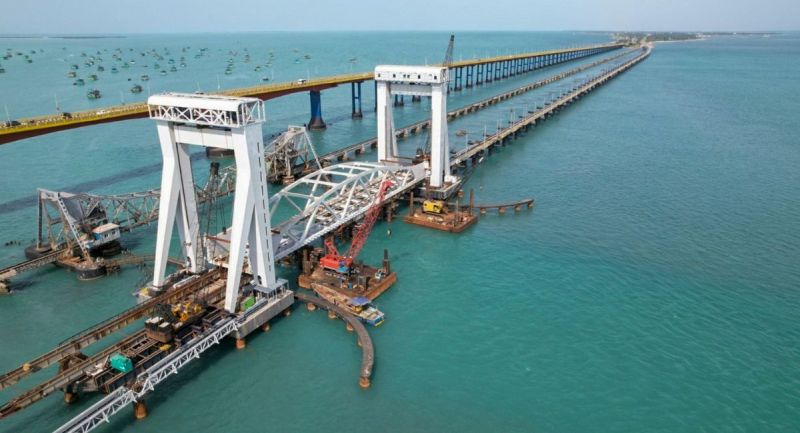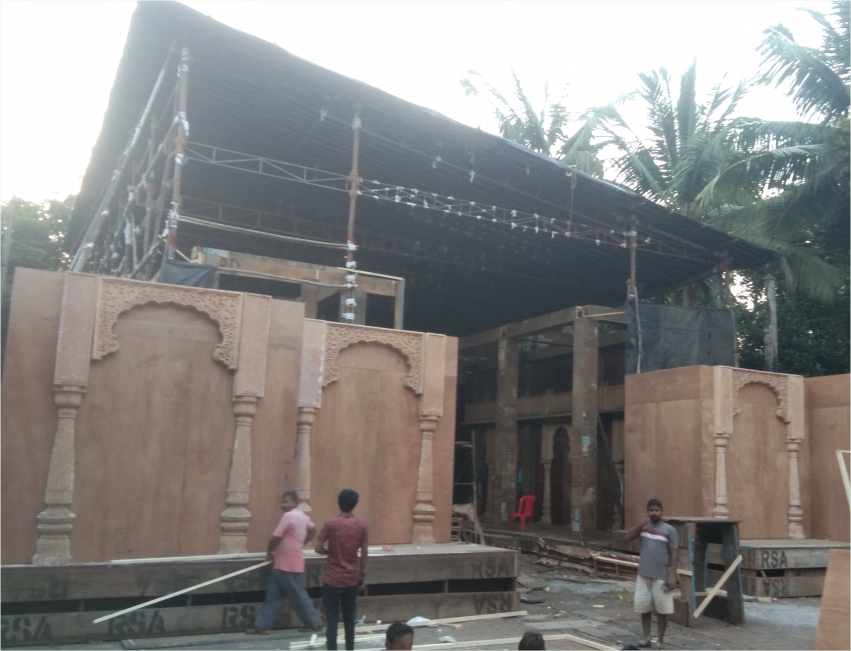India’s first vertical-lift railway sea bridge usher’s new era for Pamban

- Newsband
- 10 Apr, 2025
As the Rameswaram–Tambaram Express glides smoothly across the sea, passengers gazing out of their windows are treated to a sight that’s both futuristic and deeply rooted in legacy. Cutting through the waves is the gleaming new Pamban Bridge, India’s first vertical-lift railway sea bridge, an architectural marvel that blends innovation with heritage on Tamil Nadu’s southern coast.
Spanning the Palk Strait between the mainland and Rameswaram Island, the new Pamban Bridge replaces the beloved century-old structure that had stood since 1914. For decades, the original bridge served as a vital link for pilgrims, travellers, and goods, braving harsh marine weather and salty air. But time took its toll, prompting the need for a stronger, smarter successor.
Just 27 metres north of the historic bridge now stands its modern counterpart: a 2.07-kilometre-long engineering feat equipped with a 72.5-metre vertical lift span. This central section can rise 17 metres to allow ships to pass underneath, a first for Indian Railways.
The mechanism works much like an elevator, lifting a segment of the bridge skyward before lowering it back into place for train traffic to resume. This seamless design ensures smooth coexistence between maritime and rail movement, preserving the vital trade and transport routes that define this region.
Constructing this technological triumph wasn’t without challenges. Engineers battled unpredictable winds, rough sea currents, and a stubborn seabed, requiring immense precision and resilience.
Over 330 reinforced concrete piles support the foundation, while the superstructure features marine-grade stainless steel and corrosion-resistant coatings, ensuring longevity in a demanding environment. Built with foresight, the bridge currently accommodates a single track but is structurally prepared for double tracks, making it future-ready.
Beyond its physical presence, the bridge carries profound cultural and spiritual significance. Rameswaram, deeply entwined with the Ramayana and the legend of Ram Setu, is a sacred pilgrimage destination. The new bridge enhances accessibility for devotees while also promising economic uplift for local communities through improved connectivity and tourism potential.
Modern technology quietly powers this bridge. A three-cup anemometer monitors wind speed round the clock, automatically halting rail traffic if winds exceed 58 kmph, an essential safety measure. On-site staff benefit from an Atmospheric Water Generator that transforms air humidity into drinking water, ensuring sustainability even in mid-sea conditions.
It acknowledges the legacy of the old bridge while ushering in a bold vision of progress. As trains cross above the shimmering waters, they carry not just passengers, but stories of resilience, innovation, and continuity.




